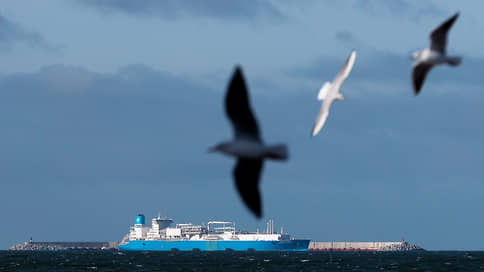Liquefied flow – Newspaper Kommersant No. 171 (7372) of 09/16/2022
[ad_1]

Gazprom, together with Ruskhimalliance, intends to explore the possibility of expanding the LNG plant in the area of the Portovaya compressor station from 1.5 million tons per year to 3.5 million tons. The site already has the entire shipping infrastructure, so companies will not have to seriously increase the CAPEX of the project. But in Russia there may not be the equipment necessary to build a line of such capacity under the conditions of sanctions, analysts remind.
Gazprom, Rushimalliance (a parity joint venture between Gazprom and Rusgazdobycha owned by Artem Obolensky) and Gazprom Linde Engineering intend to increase the capacity of Gazprom’s medium-tonnage LNG plant, Port LNG, by another 2 million tons, the Russian monopoly 15 September. Now the capacity of the Gazprom plant is 1.5 million tons.
“The possibility of building an additional technological line with a capacity of up to 2 million tons of LNG per year using domestic technologies and equipment will be studied,” the statement says. company message
As Kommersant wrote on September 7, Rushimalliance, which is building a large LNG plant in Ust-Luga for 13 million tons, wants to enter into a joint venture with Gazprom for the construction of Port LNG. Kommersant’s interlocutors suggest that Rushimalliance’s share in the joint venture may be about 50%, and Rushimalliance needs participation in the project to gain experience in operating gas liquefaction projects, which the company does not yet possess.
The Portovaya LNG plant was built on the basis of the Portovaya compressor station, which supplies gas to the now stopped Nord Stream gas pipeline. On September 6, after many years of delays, LNG production began at the plant, initially scheduled for launch at the end of 2018.
The plant now consists of two liquefaction lines using Linde technology, an onshore LNG storage tank with a capacity of 42,000 cubic meters and a floating storage facility with a capacity of 135,000 cubic meters. The volume of storage facilities allows shipment of standard large-tonnage LNG shipments, and thus the market for Portovaya gas is not limited to the Baltic Sea.
But Gazprom has no long-term LNG supply contracts with Portovaya. As a result, LNG trading from the plant may be difficult as Finland, the Baltic States, Poland and the UK have stopped buying Russian LNG. Probably, Gazprom will have to look for markets for it outside Northern Europe – for example, in South Asia, Kommersant’s interlocutors in the market believe.
At the same time, Gazprom needs to somehow compensate for the decline in gas supplies to Europe, which fell by 38.8% to 84.8 billion cubic meters in eight and a half months.
Gazprom’s production fell by 15.9% over the same period. At the same time, the Nord Stream gas pipeline, on the basis of which the Port LNG is being built, has now been completely stopped.
The only large-capacity LNG plants in Russia in Sakhalin and Yamal use gas compressors (for example, American Eliott) with a powerful gas turbine drive (up to 90 MW) manufactured by GE or Baker Hughes, independent analyst Yuri Melnikov notes. The line of 2 million tons is at least half as much in terms of productivity, but there is no certainty that Russian compressor and turbine equipment will be found for it. “The experience of NOVATEK’s Arctic Cascade has shown that these key elements of LNG technology are hard to find in Russia. The now famous Siemens turbines at the Portovaya compressor station turned out to be mainly because there are simply no machines of such power (about 50 MW) for driving natural gas blowers in Russia,” he concludes.
The most powerful Russian turbine that can be used as a compressor drive is the Ladoga 32 MW manufactured by REP Holding (manufactured under license from GE).
[ad_2]
Source link





